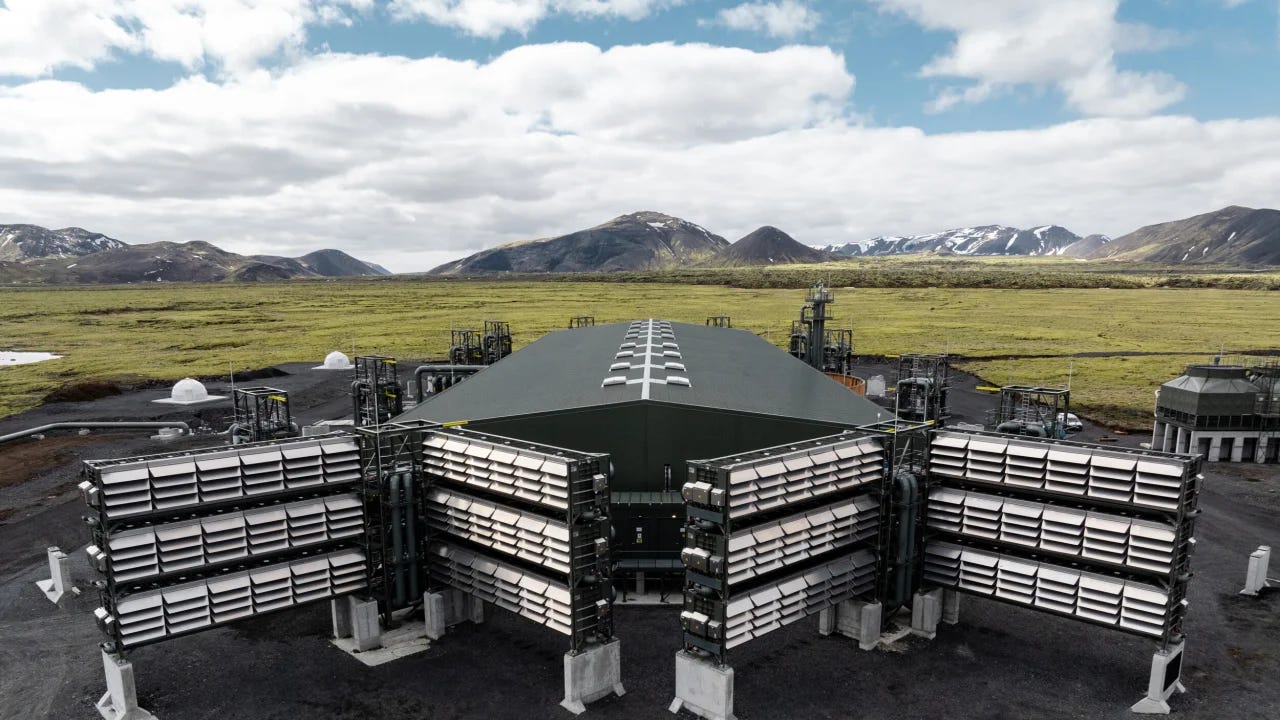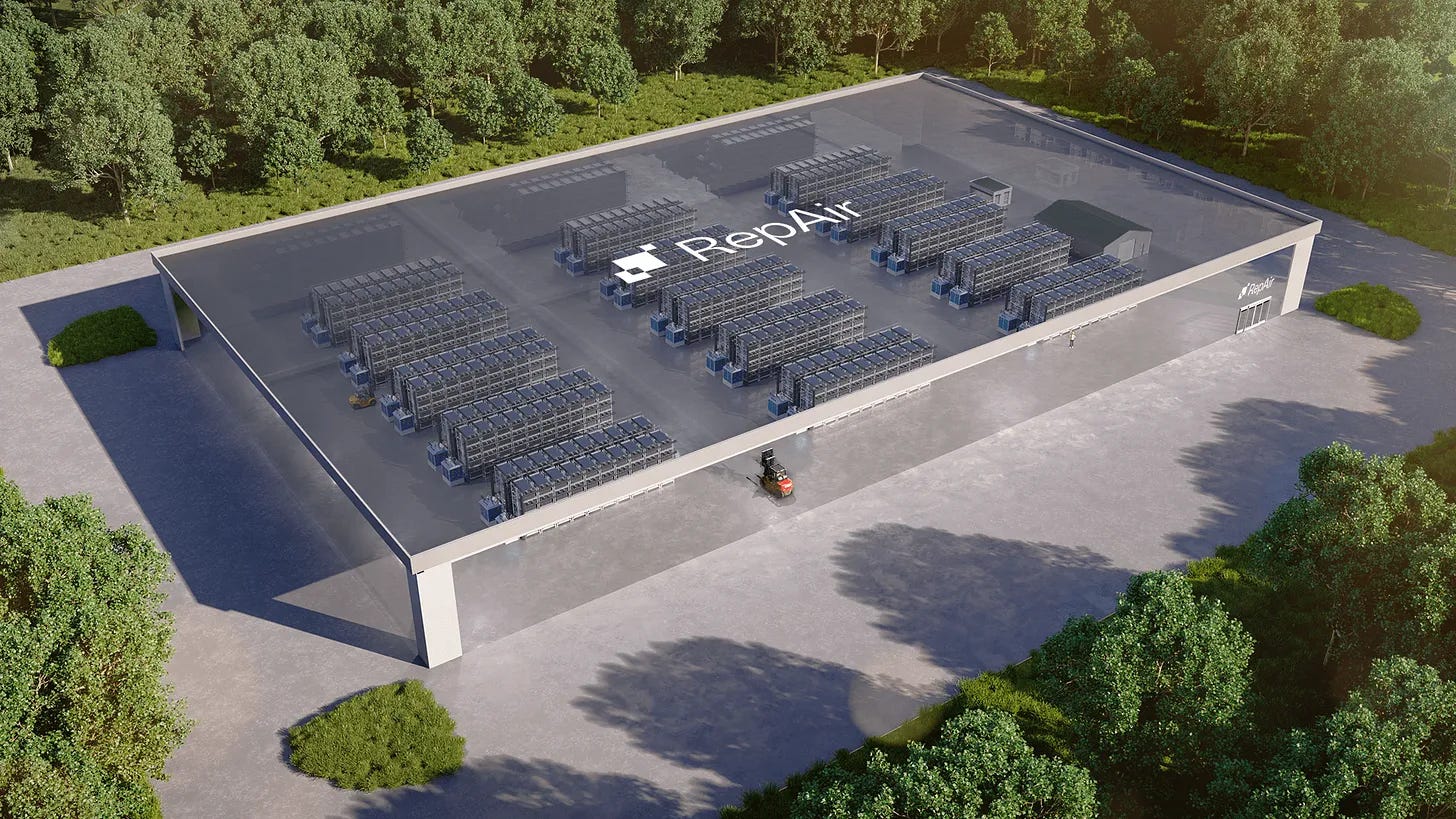How Direct Air Capture could become the "sewage system" of the sky
Lessons from Victorian London show why carbon removal is essential – not a distraction – in the fight against climate change.
"The river Thames is every whit as filthy has it has been represented... It is the receptacle of the excreta of near three millions of persons; dwellings, factories, laundries, streets, pour their liquid and solid refuse into its current; a navy of active steamboats employ their paddle-wheels in stirring the mixture, and the sun – great agent of fermentation – sets the mass into a work."
So wrote The London City Press in 1858, when the UK Parliament had to hang lime-soaked curtains in its windows to block the stench of raw sewage in the Thames. This crisis, famously called “The Great Stink”, was the inevitable result of rapid population growth and industrialisation in what was then the world's largest city, without the infrastructure to manage mounting waste.
For decades before, officials had dismissed comprehensive sewage systems as too costly or impractical. Only a public health emergency forced action, leading to the creation of modern sewers that transformed urban life.
The solution wasn't just better treatment but an integrated approach. London needed both improved indoor plumbing to prevent new waste and robust systems to clean up what was already fouling the Thames. Neither alone would have solved the crisis. The problem wasn’t solved overnight; it took decades of investment and coordinated public health measures.
The Great Stink can teach us a lot about how to deal with today's climate crisis.
As global travel, energy use, and consumption have soared, our "atmospheric waste" has accumulated due to insufficient infrastructure and a reluctance to address the root cause. As Victorian London needed toilets, clean water, and sewage treatment, we now need emissions reductions and carbon removal technology: An integrated climate solution for an integrated problem.
Why DAC? The last-mile solution and climate safety net
Enter Direct Air Capture (DAC), now seen by many as a critical component of any comprehensive climate strategy, acting as the essential "sewage system" for our atmosphere.
Yes, we need to abandon fossil fuels and cut emissions as fast as possible. But some emissions are stubbornly hard to eliminate. That includes aviation, shipping, and parts of heavy industry, the so-called hard-to-abate sectors.
DAC and other carbon dioxide removal (CDR) approaches are like the climate's cleanup crew and insurance policy, dealing with the mess left after we've done everything else. They are not a license to pollute, but a safety net for emissions we can't yet avoid.
As climate policy commentator Zsolt Lengyel recently put it: "CDR isn't the next Revolut or Facebook – it's atmospheric sewage treatment. Less IPO, more public service."
Yet recent developments in the carbon removal industry, particularly the layoffs at Climeworks, have led sceptics to claim that these setbacks prove that DAC was always a techno-utopian distraction from the "real work" of emissions cuts. Or, worse, a scam promoted by Big Oil, which is putting money into CDR, to preserve its profits.
Is DAC failing – or just growing up?
Let's acknowledge the challenges. The sceptics are right that costs remain stubbornly high, around $500 per CO₂ tonne, well above the $100/tonne threshold often cited for commercial viability.
Energy requirements are vast, raising valid questions about whether limited renewable power might be better deployed elsewhere. Recent reports from Iceland suggest that Climeworks' Mammoth plant is capturing far less CO₂ than its designed capacity.
However, a recent article from Cyril Brunner, a climate scientist, makes clear that this isn’t the whole story, highlighting misinterpretations around performance, energy use, and delivery timelines that Climeworks has been transparent about.
A market correction, meanwhile, seems inevitable. With Bloomberg reporting nearly 800 carbon removal startups globally, we're due for consolidation. Clearly, there won't be 800 winners; there probably won't even be 80. This is a natural part of any emerging technology's evolution.
It's also important to recognise that DAC is just one piece of a broader carbon removal portfolio. For example:
Biochar currently dominates the CDR market, accounting for most delivered removals while offering agricultural co-benefits.
Bioenergy with Carbon Capture and Storage (BECCS) combines renewable energy generation with carbon sequestration.
Emerging approaches like Direct Ocean Capture (DOC) leverage the ocean's natural carbon-absorbing capacity.
Each has distinct advantages and limitations, underscoring why a diversified approach is essential to reach the gigaton scale.
But solutions that matter rarely follow a straight line. Progress comes in cycles: hype, pushback, painful learning, and, if we stick with it, breakthroughs.
Five breakthroughs changing the game
Right now, breakthroughs are happening in labs, not headlines. Here are just a few examples of how the field is moving from impossible to feasible:
Humidity-swing sorbents (Northwestern University): Researchers are harnessing abundant, inexpensive materials (activated carbon, nanostructured graphite, and metal oxides) to capture CO₂ directly from the air using simple humidity changes. With optimised pore sizes, these new materials slash both cost and energy requirements.
Low-temperature electrostatics (NEG8 Carbon): We recently featured Ireland's NEG8 Carbon, which is pioneering an electrostatic system that works at just 65°C. Their capture materials last five years instead of months, while their third-generation units are approaching the crucial €100/tonne mark. This makes DAC affordable and practical at scale.
Polymer-based electrochemical capture (RepAir): Israeli startup RepAir, featured as 'one to watch' in our new book Sustainability in the Air: Vol Two, has ditched expensive metals for recycled polypropylene (the plastic in milk bottles), cutting energy requirements to just 600 kWh per tonne of CO₂ captured. Their goal? A system being developed for industrial scale, at ~$70 per tonne.
Modular electrochemistry (Rice University): Engineers at Rice have built a "porous solid electrolyte" reactor that can reduce DAC's energy needs by up to 50%. Modular, efficient, and scalable, this opens the door for integration into renewable grids and industrial hubs.
Next-gen adsorbents (Oregon State, Korea Institute): From ultra-cheap titanium molecules to advanced Korean adsorbents capturing CO₂ at 96.5% purity, these new chemistries push the envelope on efficiency and cost.
Though at an early stage, collectively, these innovations address the major challenges of cost, energy use, and scalability. These advances are moving rapidly from lab to pilot and first commercial deployment.
Why this matters for aviation
Aviation faces an enormously difficult climate challenge – the need to address the fact that more people flying will mean more emissions, unless we find solutions. Even sustainable aviation fuels (SAF) are only as green as their feedstock and production process.
That's where DAC steps in: it can provide the CO₂ needed to make almost climate-neutral e-fuels. Right now, most e-fuels use CO₂ made from biogenic sources, but the supply is limited. DAC can solve that issue.
But the role of DAC goes even deeper. Airlines are under growing pressure to move beyond offsetting. High-integrity, permanent carbon removal, especially through DAC, gives aviation a credible, auditable path to net zero, which is why for some airlines it now accounts for 10-20% of their net zero strategy.
Unlike nature-based solutions, DAC provides verifiable, measurable removals that don't compete for land or face reversal risks from fires or changing political priorities.
The permanence of geological storage (thousands of years) matches the long atmospheric lifetime of aviation emissions, and the precise accounting possible with engineered systems aligns with the sector's rigorous approach to safety and compliance.
Carbon removal is infrastructure. Let’s build it like one.
The temptation will always be to let the loudest critics set the agenda: "Climeworks faced a bump in the road, so DAC is a dead end." But history tells us otherwise.
The solar industry was written off as a failure after Solyndra's collapse and the cleantech crash of 2009-2010. Today, it's the cheapest source of energy on the planet. Electric vehicles similarly faced troughs of disillusionment before breaking through.
To meet IPCC targets, we'll need 6–10 gigatonnes of carbon removal annually by mid-century. As a result, we need to build DAC into the backbone of our infrastructure, like clean water, electricity, and yes, waste management.
As the December 2024 Carbon Gap policy brief, Advancing carbon removal beyond the hype cycle, makes clear, "CDR is a utility, not a commodity."
Reaching the scale demanded by the IPCC will mean advancing multiple solutions in parallel. The report's authors emphasise that failures and setbacks are inevitable in any truly innovative sector, but that learning from these challenges is critical for long-term success.
Ultimately, the CDR sector stands at a crossroads. If industry leaders, policymakers, businesses and the public can manage expectations, remain focused on tangible progress, and treat carbon removal as essential infrastructure, we can ensure DAC and other technologies fulfil their potential as the climate's last line of defence.







